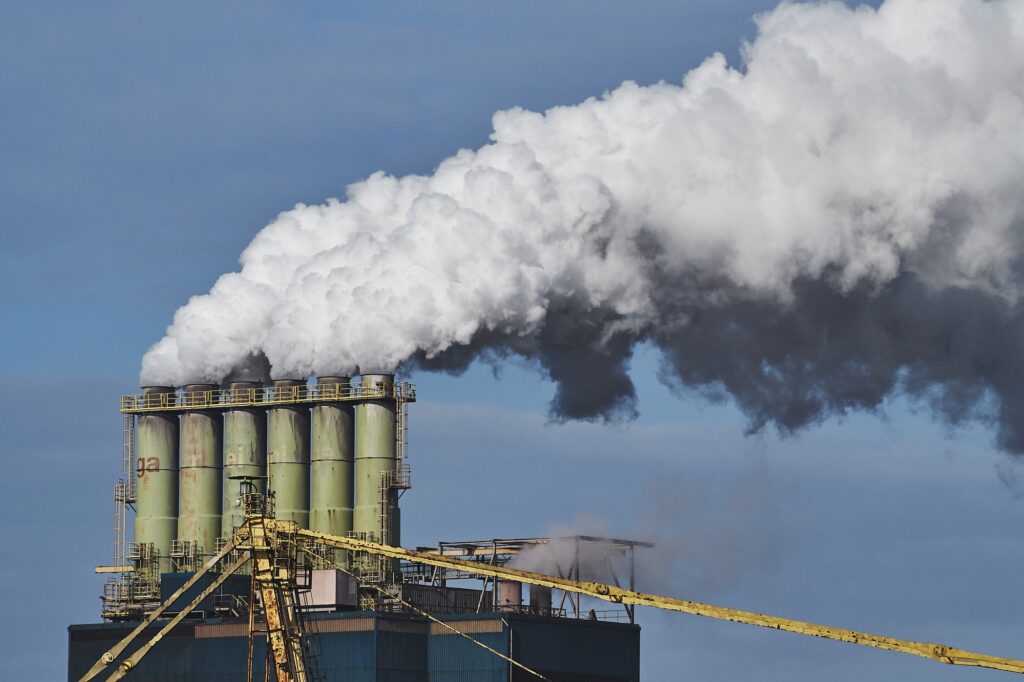The cement sector is one of the significant contributors toward the global carbon emission level in the world. It contributes to around 8% of total greenhouse emissions across the world. The urgency to combat climate change forces industries, particularly cement, to reduce their environmental footprint. Decarbonizing the cement sector is one of the critical steps toward achieving global climate goals, which involves all-inclusive measures incorporating innovative technologies, sustainable practices, and regulatory frameworks. We also discuss the emerging trends and green technologies that lead to the decarbonization of the cement industry, giving special importance to UltraTech Cement’s sustainability initiatives in this blog.
The Challenge of Decarbonizing the Cement Industry
Cement production is one of the most energy-intensive processes simply because the temperatures needed to break down limestone into clinker are so high and releases an enormous amount of carbon dioxide as a byproduct. More than this CO2 from the chemical process, however, is the actual energy that heats the kiln, often from fossil fuel sources and thus contributing to emissions. With increasing environmental concerns, industries and governments are searching for ways to minimize the carbon footprint of cement production, so greener technologies and practices are adopted.
1. Carbon Capture, Utilization, and Storage (CCUS)
One of the promising technologies that reduce the carbon footprint of cement is CCUS, or Carbon Capture, Utilization, and Storage, which is capturing CO2 produced by cement plants, transporting it, then storing it underground or putting it to another industrial application.
- Carbon Capture: CO2 capture directly from cement kiln flue gases.
- Use: Sequestered CO2 can be applied in various industrial applications, for instance in agriculture by stimulating plant growth, or as fuel precursors for synthetic fuels, or incorporated in construction materials such as carbonated aggregates.
Many cement companies, for example, UltraTech, are now embracing CCUS as part of their strategy to reduce carbon emission (the founder member of the Global Cement and Concrete Association), and a signatory of ‘2050 Climate Ambition’, an ambition to achieve carbon-neutral concrete by 2050 by which CCUS will also play a key role.
2. Low-Carbon and Alternative Clinker Materials
One of the major precursors of cement, clinker, is also one of the highest carbon-emitters in the industry. Currently, the industry is pursuing other materials with reduced carbon emissions to make cement production.
- Geopolymer and other Alternative Cements: Geopolymer cement is essentially industrial byproduct-based—either fly ash, slag, or rice husk ash. Such cements are known to have better durability and lower carbon-footprint than traditional Portland Cement.
- Limestone Calcined Clay Cement (LC3): LC3 is a combination of limestone and calcined clay that lowers clinker levels in cement production. It has much lower carbon emissions while retaining the strength and performance profile of traditional cement.
UltraTech has been leading the way to incorporate more sustainable practices into their manufacturing process. For instance, UltraTech is improving the usage of blended cements with lower clinker content and aims to increase the blended cement percentages in its sustainability journey.
3. Cement Production Electrification
The third area being studied is the electrification of cement production. Cement kilns have always used fossil fuels, whether it was coal or natural gas. Thus, by using electricity from renewable sources like wind or solar power, there is a big potential in reducing carbon intensity.
- Electrically Heated Kilns: Research is underway to use electrically heated kilns which will replace fossil fuel combustion, in the cement-making processes. This can be from renewable electricity and thus minimizes emissions.
- Induction and Microwave Heating: Recently, new technologies are being considered for the production of cement where energy usage can be reduced due to induction heating and the microwave-based method.
While electrification promises, it is yet in the experimental phase and needs much infrastructure as well as renewable energy sources for their development.
4. Blended Cements and Supplementary Cementitious Materials (SCMs)
Blended cements that consist of supplementary cementitious materials (SCMs), such as fly ash, slag, and natural pozzolans, are in good demand. These materials happen to be byproducts of other industrial units and can replace a majority quantity of clinker from being used in cement-making process without reducing the quality but lowering CO2.
- Fly Ash: Released from coal combustion in power plants, fly ash can replace more than half of clinker used in cement production and thus reduce emissions.
- Slag: The waste material from steel manufacturing, slag can be used as a binder in cement production, further reducing reliance on clinker.
UltraTech has been very aggressive in adopting such greener practices, using fly ash and GGBS (Ground Granulated Blast Furnace Slag) in conjunction with other cementitious materials. This is another of the key strategies in the line of sustainability followed by UltraTech that has helped it garner GreenPro Certification for as many as 73 products.
5. Circular Economy: A Core Philosophy at UltraTech
Circular economy practices are important in averting unnecessary wastes and ensuring high, efficient utilization of natural resources. UltraTech has adopted the dual approach in waste management: waste reduction along with fossil fuel/raw material substitution through direct use of waste materials.
- Circular Economy Practices: UltraTech uses industrial waste like fly ash and slag as alternative raw materials in the production of cement. In the period of 2019 to 2020, UltraTech used more than 15 million tonnes of industrial waste material as a substitute for clinker.
- Co-Processing: UltraTech has signed an MoU with 35 municipalities in India to co-process non-biodegradable waste, which also diverts this waste stream from landfills and develops a renewable energy source in cement production.
UltraTech was also the first producer in the world’s zero-discharge ready-mix concrete plant in 2019, ensuring commitment toward circularity and less impacts on the environment.
6. Waste Heat Recovery and Renewable Energy
UltraTech is also investing in technologies that enable energy efficiency and reduce dependence on conventional energy sources. Its strategy for sustainability focuses on recovery systems that exploit waste heat, besides the integration of more renewable energy sources such as solar and wind energy.
- Waste Heat Recovery: UltraTech has put waste heat recovery systems in many of its plants. Excess heat from the cement production process is harnessed and converted into electricity, reducing energy use and carbon emissions further.
- Renewable Energy Integration: UltraTech is making efforts to increase the share of renewable energy in its operations, reducing reliance on fossil fuels and associated emissions with cement production.
7. Regulatory Support and Carbon Pricing
Governments and regulatory bodies play important roles in steering the cement industry towards greater sustainability. Carbon pricing mechanisms, carbon taxes, and emissions trading schemes are spreading and inciting cement manufacturers to reduce their emissions.
- Emissions Standards: Many countries have put in place tighter standards on emissions for the cement industry, making manufacturers innovate and invest in greener technologies.
UltraTech has adopted Science-Based Target Initiative (SBTi), Internal Carbon Price, and Energy Productivity to be one of the leading cement companies in operational sustainability.
Conclusion
Further innovation and cooperation promise an easy road to decarbonization with the cement industry potential at its forefront in curbing climate change and making the world a more sustainable place.
Being a cement giant of India and co-founder of the GCCA, UltraTech sets an example for others and makes carbon-free concrete production by 2050 theoretically possible. On innovation, sustainability, and collaboration, UltraTech builds a leadership position in tomorrow’s cement manufacturing world— the better example.
Through all of its value chain efforts in embracing sustainability, UltraTech is building a greener future for construction and moving it to the forefront of the global shift to a low-carbon economy.
About Author
A seasoned leader with over 40 years of experience, Mr. Sunil Bajaj is an expert in policy and regulatory affairs who currently leads strategic policy initiatives at Aditya Birla Group as Group Director – Corporate Affairs and Development. Mr. Bajaj has a remarkable ability to create synergies between industry and government, fostering partnerships that drive both corporate growth and societal change.
Mr. Bajaj’s career began in 1983 as a management trainee with Indian Express, later taking on a key role at Sahara Group to establish their media house. His deep understanding of media, public relations, and strategic leadership made him a key figure in the corporate world, eventually leading him to a role at Essar Group as Director and Head of Corporate Relations.
Outside of his professional life, Mr. Bajaj dedicates time to philanthropy, particularly in supporting education and healthcare for underprivileged children. As a board member of Living Media (India Today), he continues to influence media and communications. A proud alumnus of BHU, Mr. Bajaj’s journey is one of both business success and social responsibility.

